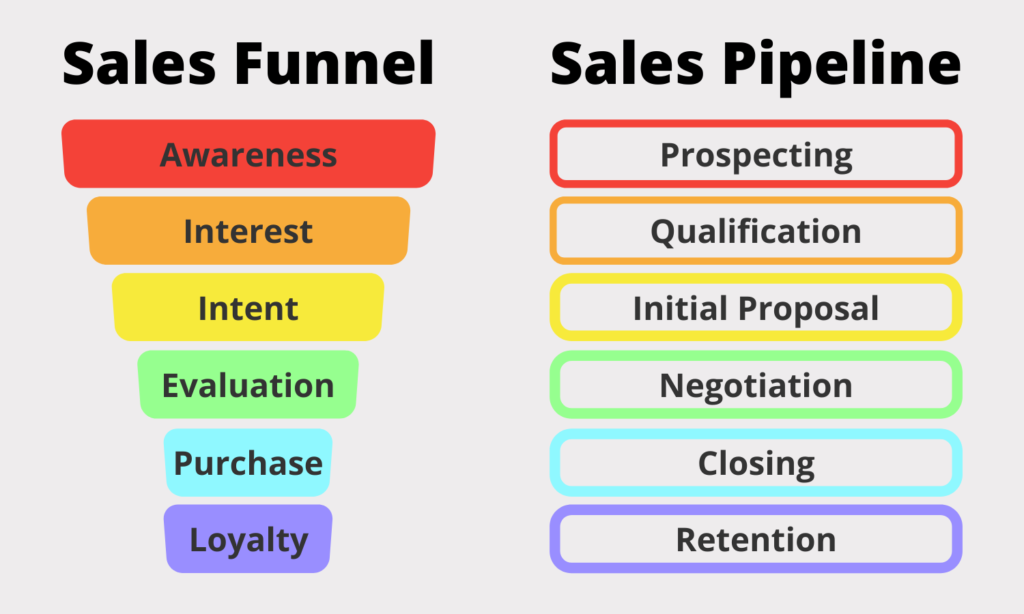Overflowing the sales funnel with leads doesn’t necessarily guarantee more paying customers in the end.
Abundant lead conversion can happen when sales reps practice meaningful engagement with them throughout the sales funnel. Leads transform into customers by stepping through a carefully curated sales funnel.
However, without a mapped out sales funnel, that conversion path becomes muddied with unclear messaging, resulting in lost leads.
Let’s answer some questions about what sales funnel mapping is and how to utilize it in your sales strategy.
What is Funnel Mapping?
Although it’s referred to as a “funnel,” it’s more sophisticated than what you use to change your car’s oil. A sales funnel provides a visual of the buyer’s journey from top to bottom, beginning to end.
Sales funnel mapping is the process of outlining the steps leads take to become a real customer. A well-thought-out sales funnel includes channel strategy, content, and personalized messaging, tailored for each step.
Consider this: more than half (55%) of B2B professionals in a Folloze survey say personalization leads to higher rates of sales conversions and future growth.
Its shape reflects that not every lead that shows up a brand’s radar ends in a deal. The prospects “leak out” when they choose competitors, are deemed unqualified, or give up on choosing solutions altogether.
Sales Funnel vs. Sales Pipeline
The sales funnel illustrates and helps measure conversion rates, while the sales pipeline outlines actions taken by sales reps throughout the sales cycle.
So if you need a visual for your current sales cycle state and your prospects’ stages, create a sales funnel unique to your organization. Alongside that funnel, use the sales pipeline to identify which actions need to take place at those stages.
How Do You Plan a Sales Funnel?
High quantities of new leads need to meet with low costs spend per lead to accomplish the highest ROI in your sales funnel strategy. Planning and mapping your sales funnel, along with a strong lead generation strategy, can make this a reality.
During the mapping process, keep potential prospects’ questions in mind, as their needs change from stage to stage. In the end, you want to deliver the exact message needed for them.
Here’s how the sales funnel correlates with the customer journey:

Challenges in Sales Funnel Mapping
To achieve and maintain a successful sales funnel map, you need to consistently address the “cracks” (like a cracked car engine). Here’s how to avoid losing leads to a dripping sales funnel:
- Revisit each stage of the funnel regularly
- Optimize your lead response times
- Align with marketing teams to solidify qualification processes
- Analyze buyer behavior
- Boost your content marketing
How Do You Structure a Sales Funnel?
The structure of a sales funnel is dependent on the quality of its details. And these details should include daily, weekly, monthly, and quarterly sales actions.
For an ROI-optimized sales funnel, it should achieve maximized effectiveness while requiring minimal resources.
Top Funnel
The top of the funnel includes the awareness and discovery stages. Leads are typically drawn in by relevant content, which opens up opportunities for future sales and marketing engagement.
Your content needs to resonate with readers who are looking for your product or service to solve one of their pain points (or maybe even multiple!).
Mid Funnel
The middle of the funnel is where leads research and compare solutions. They’re looking at features, perks, and pricing to decide what’s right for them.
Along with their own gathered research, this is the best time to educate leads about your solution, offer them demos, and give out promotions.
Funnel Bottom
It’s the final countdown — here, leads make purchasing decisions and edge closer to full conversion. Some sales reps live for this stage — when it’s time to deliver those lasting messages to your soon-to-be customer.
Just because a lead makes it to the bottom from the funnel from the very top doesn’t always mean they’ll say yes — sometimes it’s out of your control.
The Next Steps in Mapping Your Sales Funnel
The buyer’s journey, sales funnel, and sales pipeline all run parallel with each other. Improving all three makes your overall sales strategy a powerhouse for shorter sales cycles.
So with alignment with your marketing team, consider dissecting your sales process. No lead is completely the same, but planning their actions can boost conversion — from the very beginning to end.


